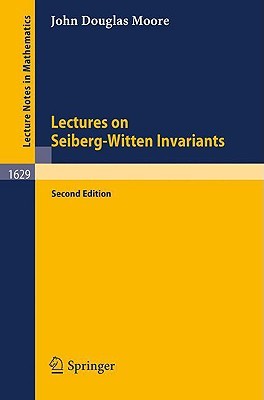
- We will send in 10–14 business days.
- Author: John D Moore
- Publisher: Springer
- Year: 2001
- Pages: 121
- ISBN-10: 3540412212
- ISBN-13: 9783540412212
- Format: 15.6 x 23.4 x 0.7 cm, softcover
- Language: English
- SAVE -10% with code: EXTRA
Reviews
Description
Riemannian, symplectic and complex geometry are often studied by means ofsolutions to systems ofnonlinear differential equations, such as the equa- tions of geodesics, minimal surfaces, pseudoholomorphic curves and Yang- Mills connections. For studying such equations, a new unified technology has been developed, involving analysis on infinite-dimensional manifolds. A striking applications of the new technology is Donaldson's theory of anti-self-dual connections on SU(2)-bundles over four-manifolds, which applies the Yang-Mills equations from mathematical physics to shed light on the relationship between the classification of topological and smooth four-manifolds. This reverses the expected direction of application from topology to differential equations to mathematical physics. Even though the Yang-Mills equations are only mildly nonlinear, a prodigious amount of nonlinear analysis is necessary to fully understand the properties of the space of solutions. . At our present state of knowledge, understanding smooth structures on topological four-manifolds seems to require nonlinear as opposed to linear PDE's. It is therefore quite surprising that there is a set of PDE's which are even less nonlinear than the Yang-Mills equation, but can yield many of the most important results from Donaldson's theory. These are the Seiberg-Witte equations. These lecture notes stem from a graduate course given at the University of California in Santa Barbara during the spring quarter of 1995. The objective was to make the Seiberg-Witten approach to Donaldson theory accessible to second-year graduate students who had already taken basic courses in differential geometry and algebraic topology.
EXTRA 10 % discount with code: EXTRA
The promotion ends in 15d.09:04:30
The discount code is valid when purchasing from 10 €. Discounts do not stack.
- Author: John D Moore
- Publisher: Springer
- Year: 2001
- Pages: 121
- ISBN-10: 3540412212
- ISBN-13: 9783540412212
- Format: 15.6 x 23.4 x 0.7 cm, softcover
- Language: English English
Riemannian, symplectic and complex geometry are often studied by means ofsolutions to systems ofnonlinear differential equations, such as the equa- tions of geodesics, minimal surfaces, pseudoholomorphic curves and Yang- Mills connections. For studying such equations, a new unified technology has been developed, involving analysis on infinite-dimensional manifolds. A striking applications of the new technology is Donaldson's theory of anti-self-dual connections on SU(2)-bundles over four-manifolds, which applies the Yang-Mills equations from mathematical physics to shed light on the relationship between the classification of topological and smooth four-manifolds. This reverses the expected direction of application from topology to differential equations to mathematical physics. Even though the Yang-Mills equations are only mildly nonlinear, a prodigious amount of nonlinear analysis is necessary to fully understand the properties of the space of solutions. . At our present state of knowledge, understanding smooth structures on topological four-manifolds seems to require nonlinear as opposed to linear PDE's. It is therefore quite surprising that there is a set of PDE's which are even less nonlinear than the Yang-Mills equation, but can yield many of the most important results from Donaldson's theory. These are the Seiberg-Witte equations. These lecture notes stem from a graduate course given at the University of California in Santa Barbara during the spring quarter of 1995. The objective was to make the Seiberg-Witten approach to Donaldson theory accessible to second-year graduate students who had already taken basic courses in differential geometry and algebraic topology.


Reviews